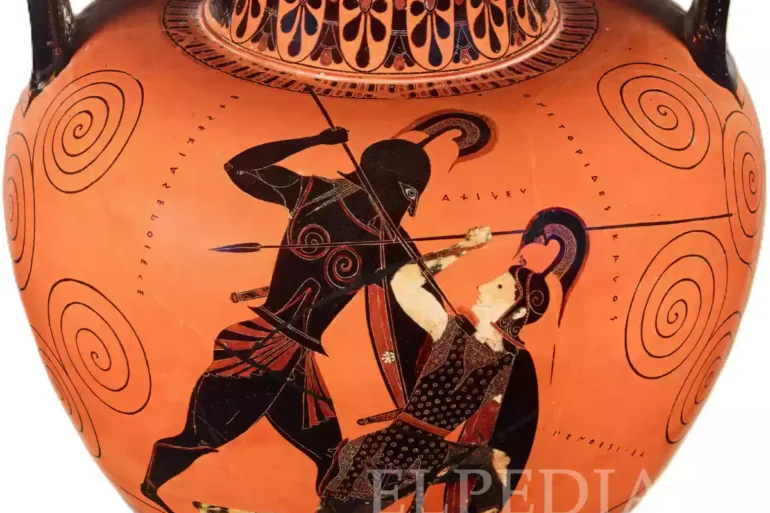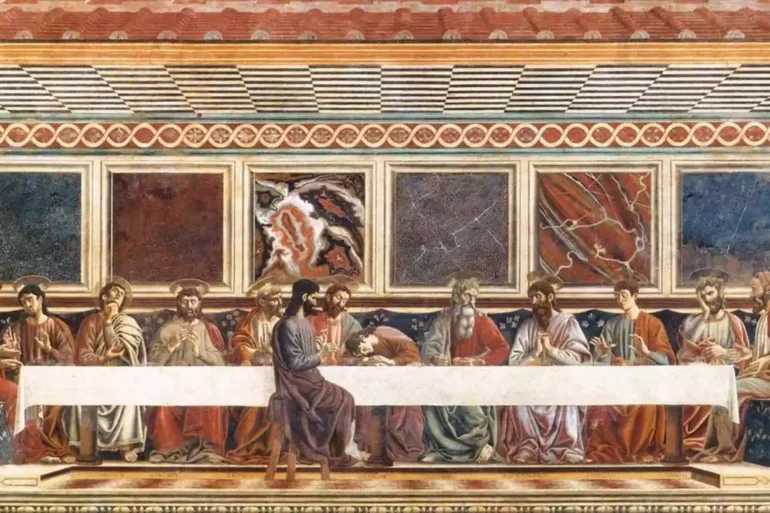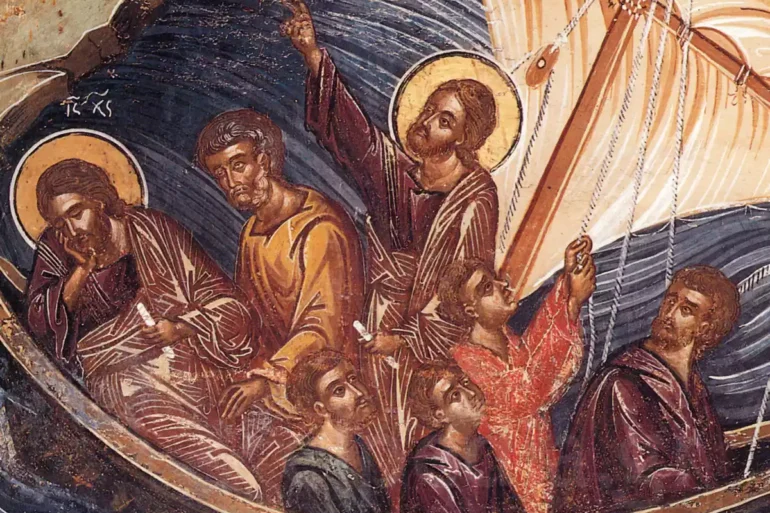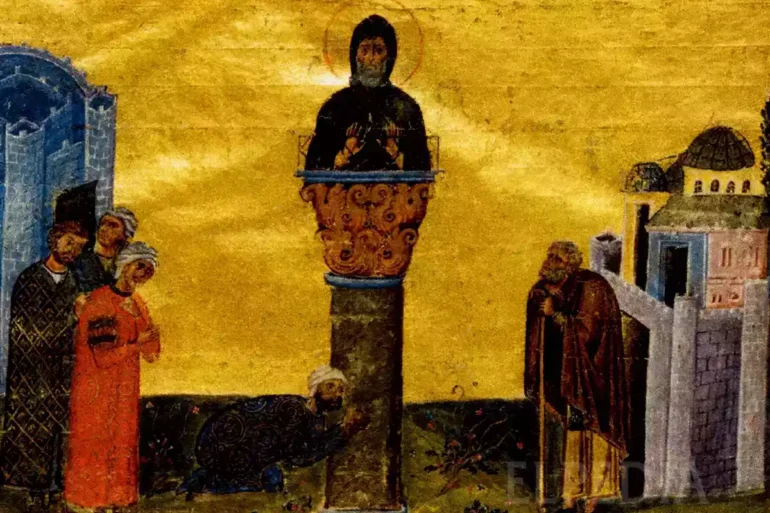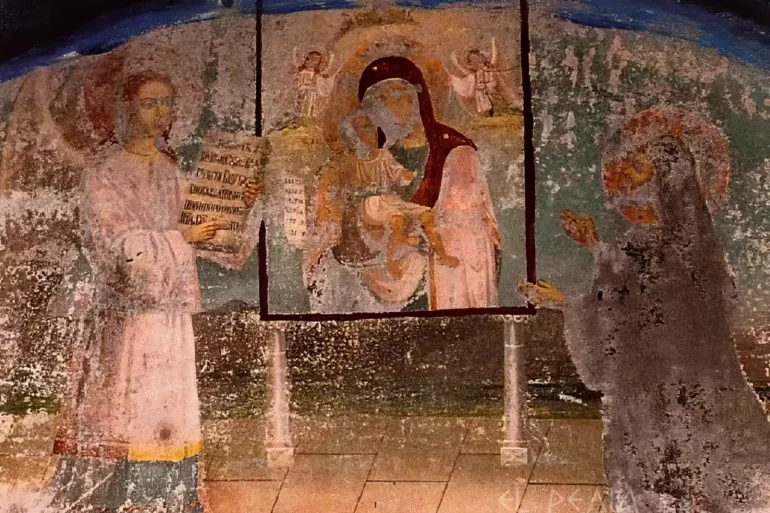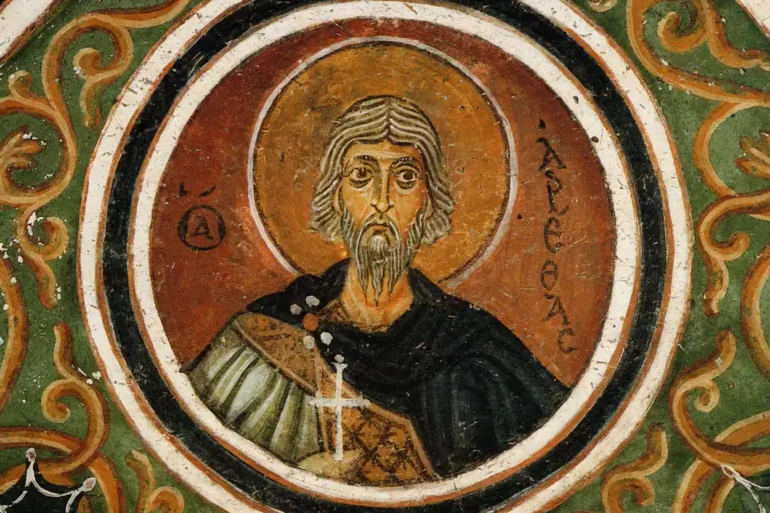The black-figure amphora depicting Achilles and Penthesilea by Exekias is one of the most important examples of Archaic vase painting. This exceptional work, dating approximately to 540-530 BC, is currently housed in the British Museum in London. It is an amphora with a height of 41 centimeters, depicting the dramatic moment of the duel between Achilles and the queen of the Amazons, Penthesilea. The technical perfection and detailed rendering of the figures demonstrate the exceptional craftsmanship of Exekias, one of [...]
The Last Supper by Andrea del Castagno is an iconic work of the Italian Renaissance. Andrea del Castagno, born around 1419 in Castagno and deceased in 1457 in Florence, created this impressive fresco in 1447. The work, located in the Monastery of Sant'Apollonia in Florence, highlights Castagno's artistic prowess and his ability to combine traditional iconography with innovative techniques. The composition, with its strong color contrasts and exceptional perspective, [...]
Title: Our Lady of the Sign
Artist: Unknown Iconographer of the Novgorod School
Type: Portable Icon of Byzantine Style
Date: circa 1600 AD
Dimensions: 53 x 41 cm
Materials: Egg tempera and gold leaf on wooden panel
Location: Museum of Russian Icons, Clinton, Massachusetts
Our Lady of the Sign is one of the most significant depictions of the Theotokos in the Orthodox iconographic tradition. It is an exceptional icon of the Novgorod School, dating around 1600 AD. The icon depicts the Virgin Mary in a posture of supplication [...]
The Panagia Arakiotissa is an exceptional example of 12th-century Byzantine art in Cyprus, with unique theological symbolism.
Mural where Christ rebukes the wind and the sea at the Monastery of Philanthropenon (16th century).
The Rucellai Madonna by Duccio is a milestone of medieval art, combining Byzantine tradition with innovative elements.
Title: Christ Pantocrator Artist Name: Angelos Akotantos Genre: Byzantine Icon Date: 15th century A.D. Dimensions: 89 x 57 cm Materials: Egg tempera and gold leaf on wood Location: State Museum of Fine Arts Pushkin, Moscow
The Pantocrator by Akotantos is one of the most significant examples of the Cretan School of iconography from the 15th century. The icon, crafted with exceptional mastery and theological precision, captures the form of Christ Pantocrator in a composition that combines spiritual strength with divine tranquility. The [...]
Title: Christ’s Burial (1546) Artist Name: Theophanes the Cretan Genre: Byzantine Religious Art / Post-Byzantine Icon Date: 1546 CE Materials:...
Meet Saint Simeon, the pioneering stylite ascetic of Syria, through the Byzantine illustration of the Vatican Menologion.
Title: Christ Pantocrator in Clinton (1580) Artist Name: Unknown Russian Iconographer Genre: Orthodox Christian Icon Date: c. 1580 AD Dimensions: 71 x 54 cm Materials: Egg tempera and gold leaf on wooden panel Location: Museum of Russian Icons, Clinton, Massachusetts, USA
Christ Pantocrator, as the dominant theme of Orthodox iconography, is depicted with exceptional mastery in this 16th-century Russian icon. The work is an exquisite example of the long-standing tradition of Russian iconography, where theological significance is harmoniously intertwined [...]
Memory: June 11 Saint Gabriel the Athonite is one of the most significant figures of Athonite monasticism in the 10th century, inextricably linked with the miraculous event of the delivery of the hymn "Axion Estin." He practiced asceticism in Karyes of Mount Athos, at the Cell of the Dormition of the Theotokos in the area of Kapsala, which today belongs to the Monastery of Pantokrator. His spiritual journey is characterized by deep humility and dedication to the ascetic life under the guidance of his Elder. In the year 980 AD, he was deemed worthy of a [...]
The fresco of Saint Arethas at the Monastery of Hosios Loukas (11th century), a masterpiece of Byzantine art.

